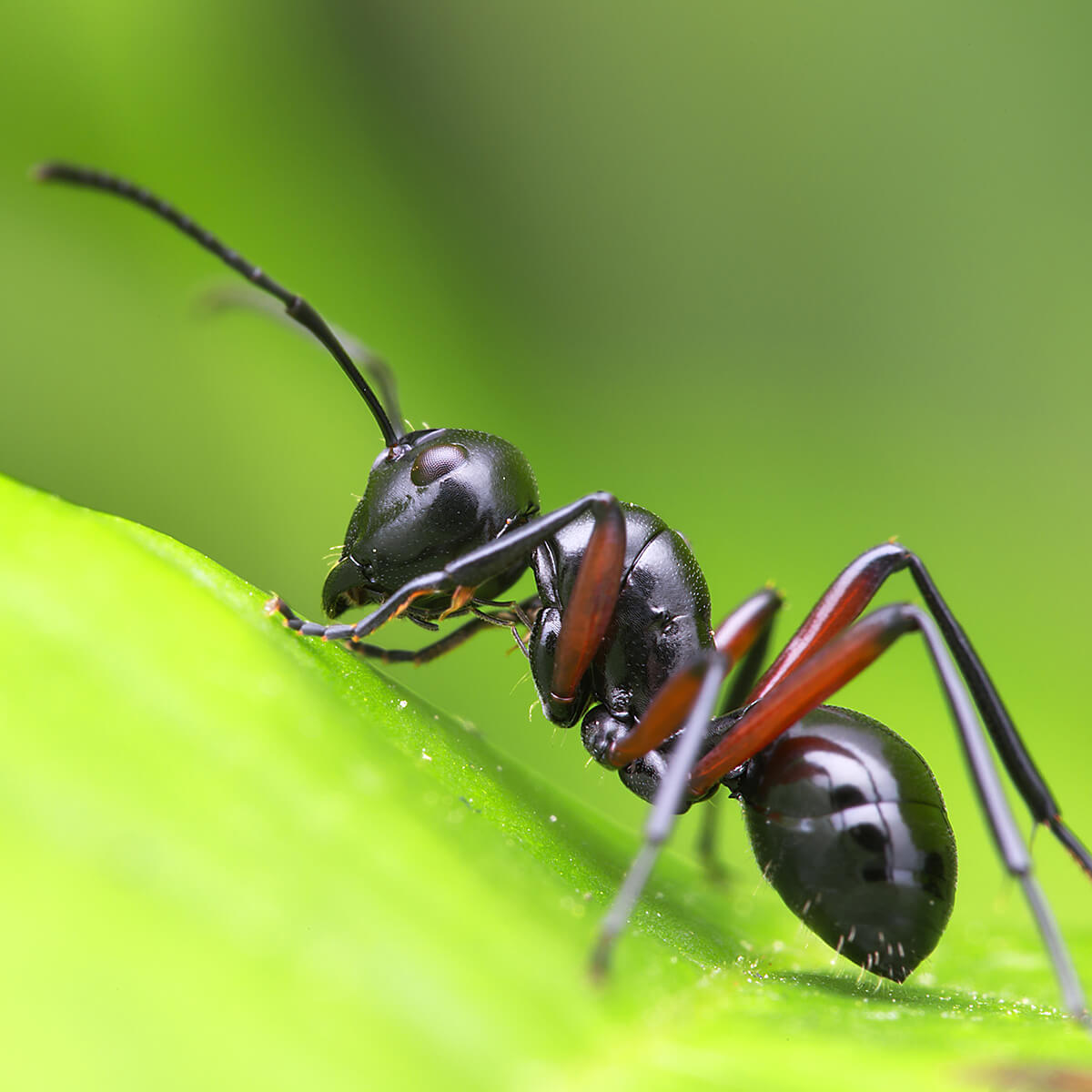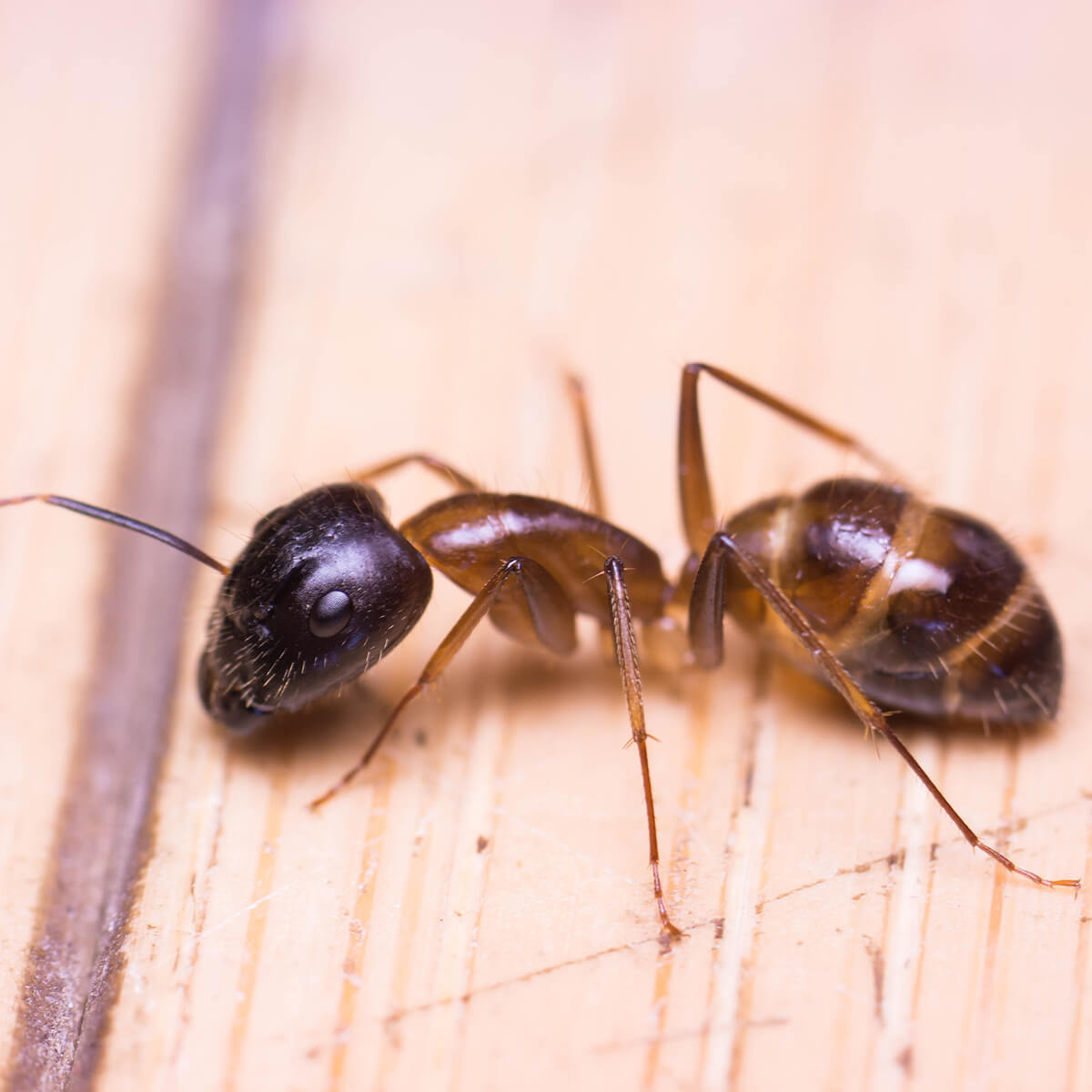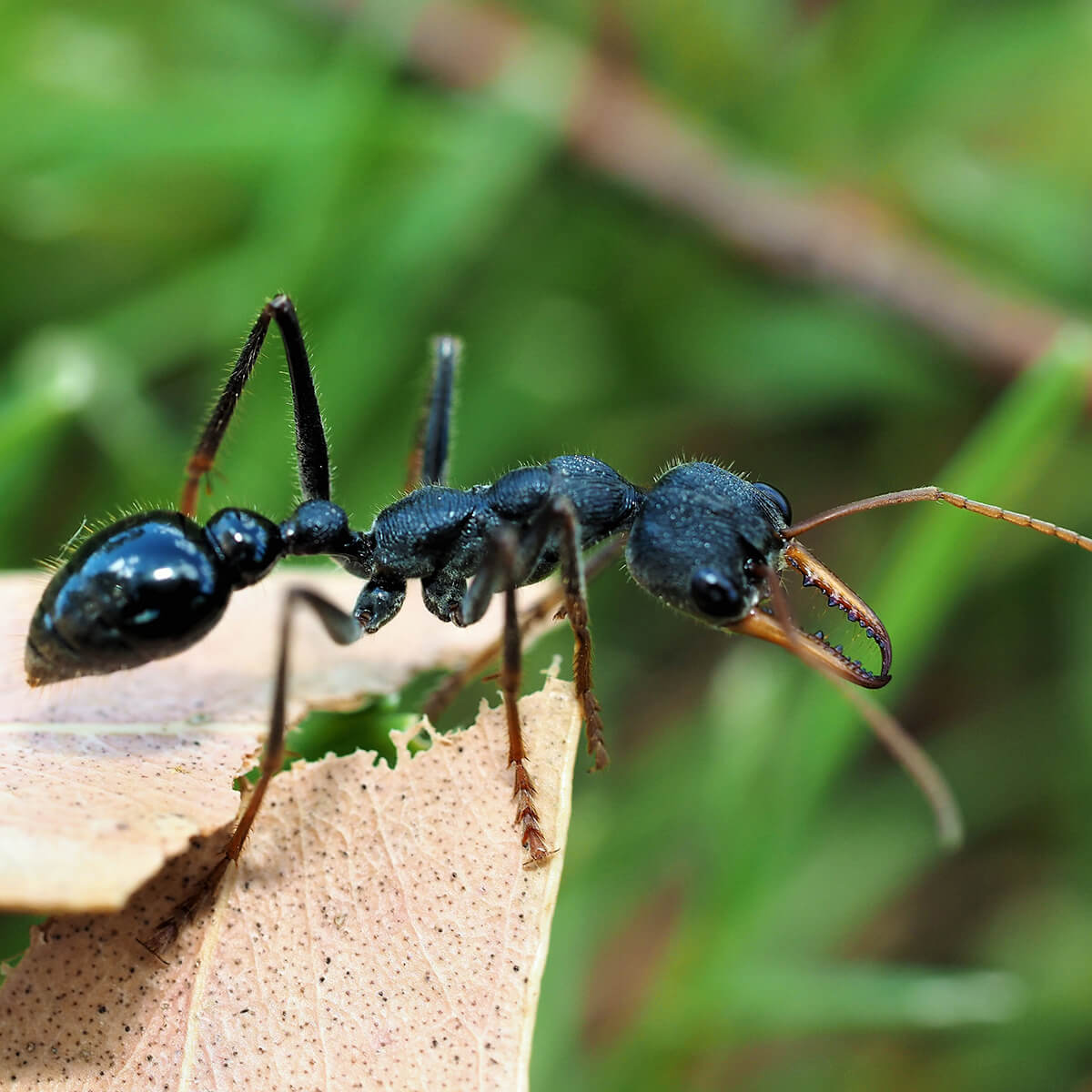Ants
Ants have one of the greatest evolutionary success stories in history - they represent more than 10% of the entire biomass on land! They have been around for more than 100 million years and they have outlived reptiles and mammals, alike.
Having gone through very subtle changes over such a long period of time and always working together for their common good, ants are a really impressive biological achievement.
Their numbers, resilience, and industriousness are what makes them such a formidable pest, too. Our very own species of Australian ants can be even more impressive. So let's delve in a bit deeper and see what makes these hard-working arthropods tick!
Australian ant species
Australian ants live in colonies based on a caste system, no different from ants all over the world. Generally speaking, there's one or several fertile females (the queens), males (the drones), and the rest are sterile females (workers and soldiers). Queens live a lot longer than workers (might have to do with the fact that they sleep more), but drones have the shortest lifespan because their only purpose is a reproduction. There are also gamergate colonies where all females are fertile and the queen caste is all but nonexistent.
Ants feed predominantly on sugary and fatty foods. They mostly go for liquids since they incapable of consuming solid foods. If they need to process solid foods, they feed it to their larvae and the larvae produce a protein-rich edible goo adults can later consume.
Ants have a diverse diet. Just like humans, they need protein, fat and carbohydrates to sustain a healthy diet.
Ants are usually omnivorous, but each species have preferred food. Some ants prefer to hunt insects and small animals, some eat leaves and greens and some prefer sugary food.
Worker ants scout for food outside the colony. Once they identify a save food source, they return to the nest leaving a chemical trait behind them, so the other ants could follow the trace and bring the food to the nest.
Read more about what do different ant species eat.
- Some species like the jack jumper ants are particularly venomous. So venomous, in fact, that they are the prevalent cause for allergic reactions due to ant stings in Australia. They are responsible for about 90% of the cases of allergic reactions.
- The likes of carpenter ants can deal just as much damage as termites to your wooden foundations. Your home might be the perfect place for their new colony.
- They can damage wiring and electronics. If they find their way into your computer, they may cause serious damage.
As much as 3% of people can be allergic to ants in some areas that are overrun with these venomous buggers. If they get stung, they will go into anaphylaxis. Their sting can be quite painful even if you're not allergic. To make matters worse, once you get stung, the ant usually leaves a chemical trail warning its brethren you're a threat, so you might get a lot more if there are lots of ants around.
There is strength in numbers! No one proves that better than ants. They affect the environment around them in very profound ways, despite their small size.
When they create their nests and go about their daily business underground, they inadvertently affect the nutrient content of the soil. They can also help to remove detritus and manage natural waste.
Another distinct characteristic is their predatorial behaviour toward some species. Because of this, they are also a natural form of pest control and control the populations of certain species that might be dangerous for your garden. In high enough numbers, they have no problem hunting down larger prey.
What attracts ants to the house?
If you have ants inside, they're looking for one of two things - food or water (possibly both). Let's round up the usual suspects:
- Sugary foods left out in the open is the number 1 perpetrator. Ants love this!
- Spilling a sugary drink and not cleaning it properly. See above!
- Food traces or crumbs. Bread is carbs, and carbs turn into sugar.
- Ants are more active in the summer due to collecting more food for the colder seasons.
- Leaky faucets can be a big one. This is why you may find ants in the bathroom, for example.
- Your house is just too hospitable - warm, damp. Some species like the carpenter ants build their nests in wood, so your house might provide a great ground for base of operations.
Read more about: What attracts ants to your house?
Ant proofing tips
As temperature rises, ants become more active and will scout your entire property for access to food and water. If they decide that your home has the perfect conditions for nesting, you might deal with an ant infestation.
Read here How to ant-proof your home and assure to keep the little invaders outside.
Get rid of ants inside
If ants invade your home, they usually nest in your kitchen or your bathroom. Follow the scouts and try to identify if their colony is inside and if there is a food residue that attracts them. If that is the case, make sure to clean up all of it.
You can cut down their chemical trail to the food, cleaning the area with wood and vinegar. The vinegar scent will erase the chemical, and the ants won't be able to find the food source again.
Read more on: How to make an ant trap and how to get rid of ants inside.
Get rid of ants outside
Ants can invade your backyard or garden as well. Removing an ant infestation from your yard can be difficult. The best way to do so is to destroy their colony within the nest.
There are some natural methods to get rid of ants outside such as pouring boiling water into the nest, making a soap and water mixture, making a repellent spray or even pouring glue into the nest.
It's best if you treat the nest early in the morning or late at night when most of the workers are back in the nest.
Read here a detailed description of: How to get rid of ant nest outside naturally or using pesticides.
Get rid of ants in your car
An ant infestation can happen even in your car. It usually means that the ants have found a source of food or water, or their colony is nearby the place you parked your car.
The ants you see inside your car may be scouts. In that case, they might leave soon on their own once they realize there is no food around.
If that's not the case learn: How to get rid of ants in your car.
What can you do if you have an ant infestation?

- Keep all food sealed away in plastic containers.
- Look for the source of the infestation - if it's food or a leaky faucet, deal with this problem first.
- Thoroughly clean the floors - this will eliminate their chemical pathways.
- If the problem persists, you can always count on professional ant control.








